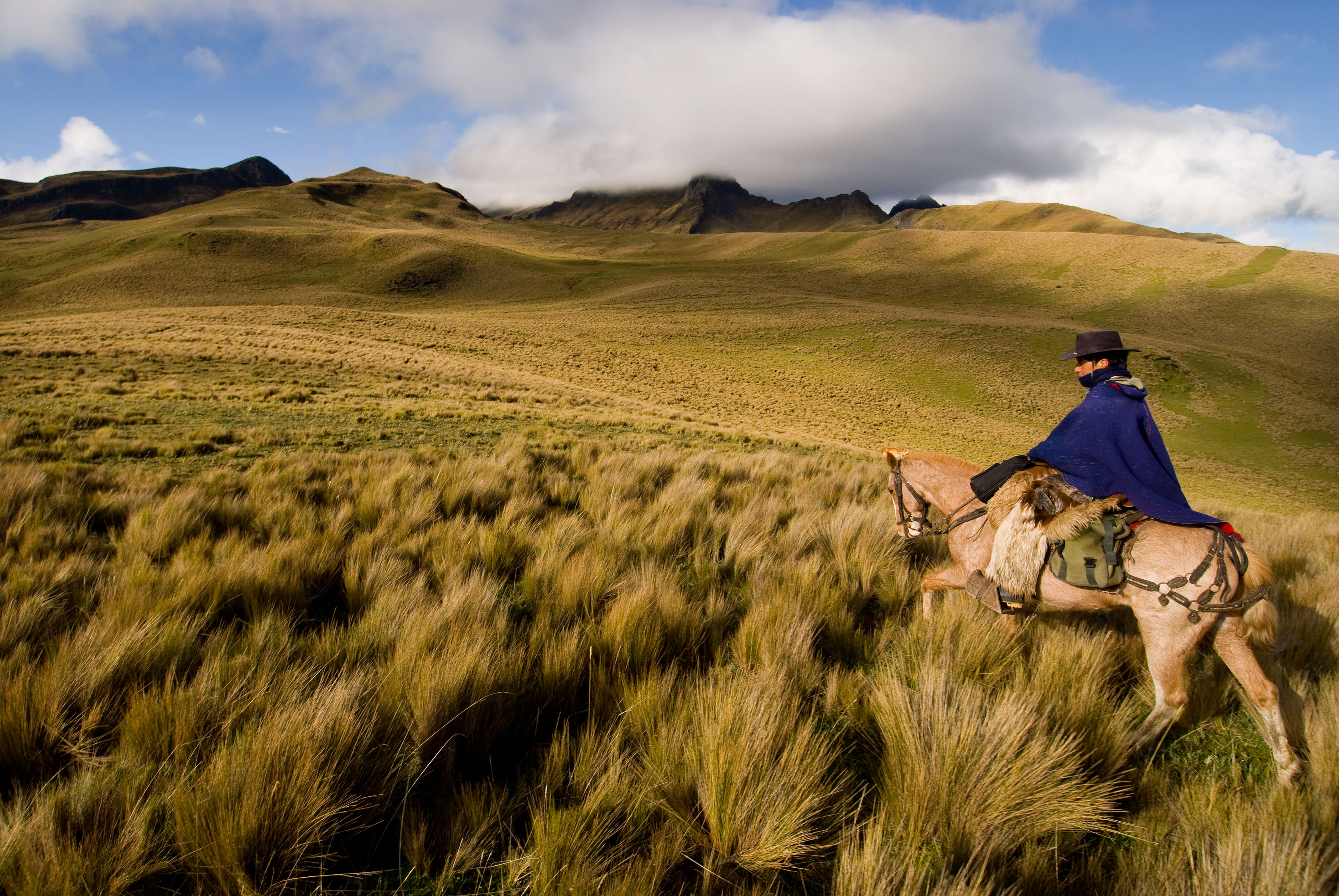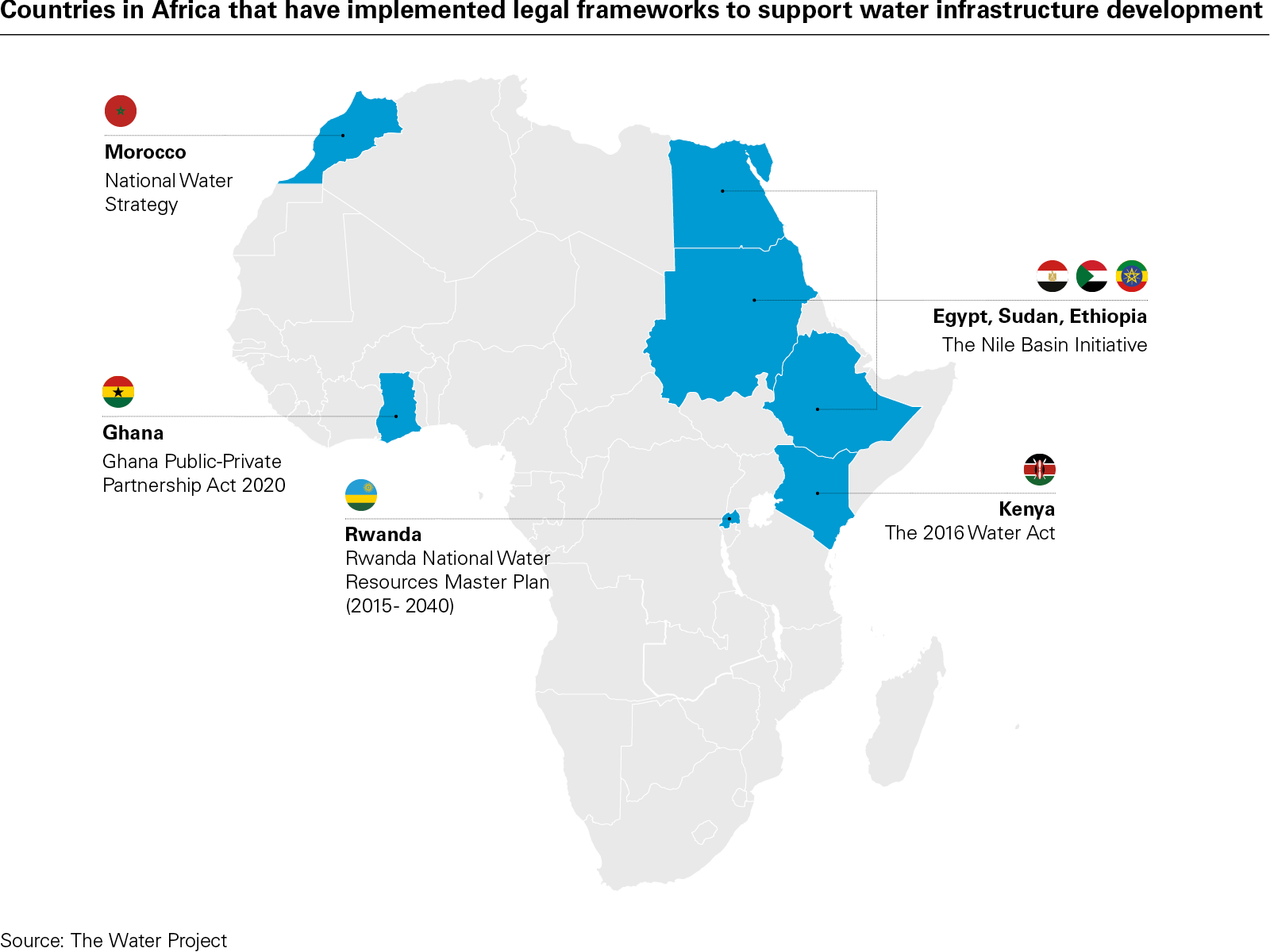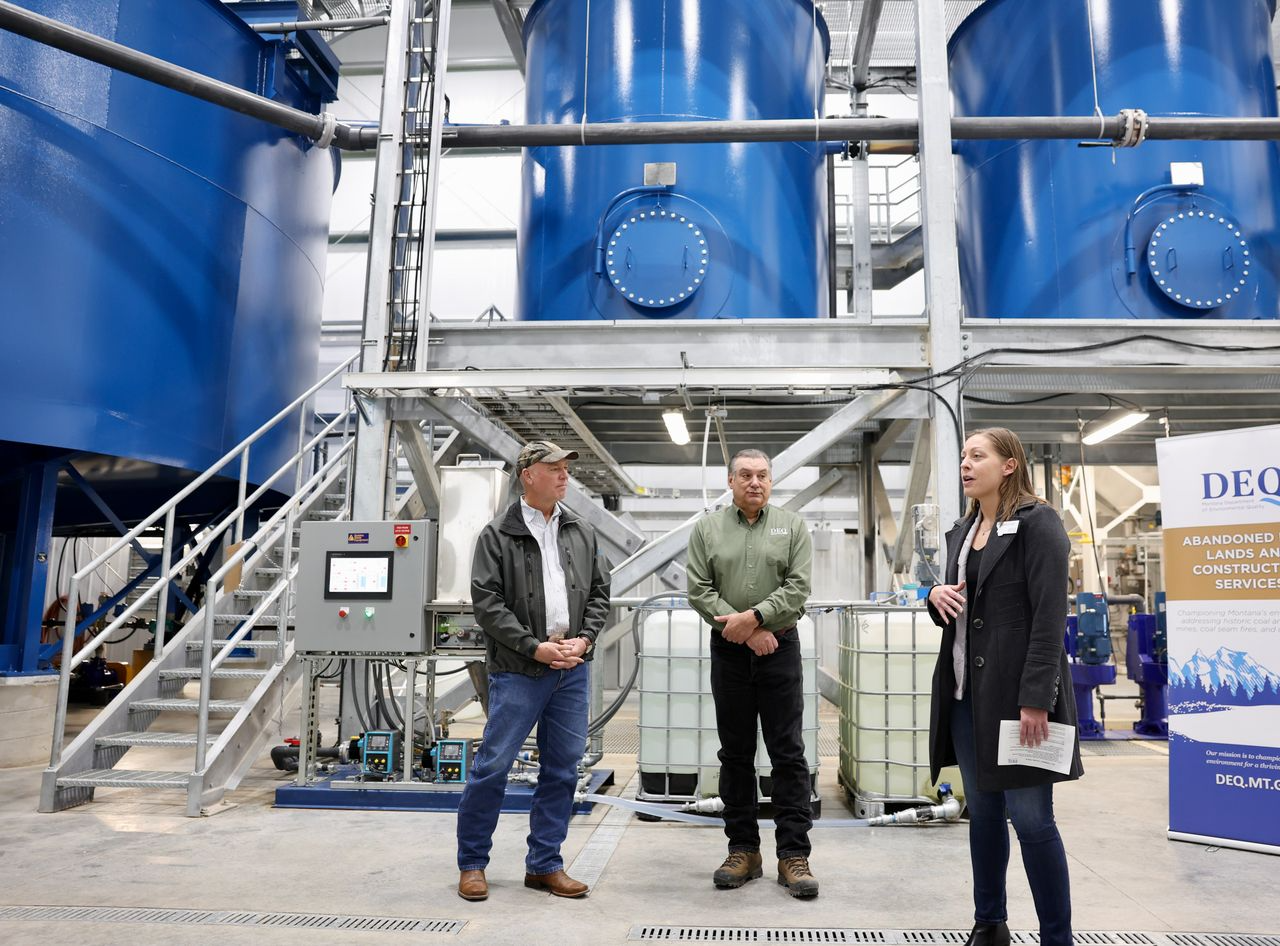Restoration brings back fresh water, wildlife to degraded páramos in Ecuador – Mongabay

Report on the Ecological Restoration of the Antisana Páramo and its Contribution to Sustainable Development Goals
1.0 Executive Summary
This report details the successful ecological restoration of the Antisana páramo in Ecuador, a high-altitude ecosystem critical to the water supply of Quito. The project, initiated through a partnership led by the Quito Water Conservation Fund (FONAG), has reversed centuries of environmental degradation caused by livestock ranching. By acquiring and restoring 8,500 hectares of land, the initiative has significantly improved water quality and ecosystem health, demonstrating a powerful model for achieving multiple Sustainable Development Goals (SDGs). The restoration has led to the recovery of native vegetation, the re-establishment of wetlands, and the return of key wildlife species, including white-tailed deer and pumas. This case serves as a benchmark for sustainable financing mechanisms and collaborative conservation, directly contributing to SDG 6 (Clean Water and Sanitation), SDG 15 (Life on Land), SDG 11 (Sustainable Cities and Communities), and SDG 17 (Partnerships for the Goals).
2.0 Historical Context and Environmental Degradation
2.1 Centuries of Agricultural Impact
The Antisana páramo, located southeast of Quito, suffered from severe environmental degradation for centuries due to intensive livestock ranching. Historical records from as early as 1802 note the heavy presence of cattle and sheep in the region. The long-term impacts of this land use included:
- Soil Compaction: The hooves of livestock compacted the soil, reducing its capacity to absorb and retain water, a critical function for this water-recharge area.
- Vegetation Loss: Overgrazing and intentional fires set to create pastureland destroyed native páramo grasses and shrubs.
- Wetland Drainage: Critical wetlands were drained to expand grazing areas, transforming them into dry, sandy flats susceptible to wind erosion.
- Water Contamination: Animal waste polluted water sources, diminishing the quality of water flowing to Quito.
- Biodiversity Loss: Native fauna such as white-tailed deer (Odocoileus virginianus), Andean tapeti (Sylvilagus andinus), and Andean foxes (Lycalopex culpaeus) were displaced by livestock and hunting pressure. Apex predators like the puma (Puma concolor) were driven from the area.
This prolonged degradation threatened the ecosystem’s ability to provide essential services, particularly its role as a primary water source for the capital city, directly challenging the objectives of SDG 6 and SDG 15.
3.0 Intervention: A Partnership for Water and Life
3.1 The Quito Water Conservation Fund (FONAG)
A pivotal shift occurred with the establishment of the Quito Water Conservation Fund (FONAG) in 2000. This initiative represents a successful partnership (SDG 17) between public and private entities.
- Founding Partners: FONAG was created by Quito’s public water utility (EPMAPS) and The Nature Conservancy (TNC), later joined by other major private water users.
- Sustainable Financing Model: The fund’s primary income is derived from a 2% levy on water bills from EPMAPS customers, directly linking water consumption to conservation. Additional funding comes from corporate water footprint offset programs, creating a sustainable and reliable financing mechanism for long-term environmental action.
- Strategic Land Acquisition: In 2010, leveraging its capital, FONAG and EPMAPS purchased approximately 7,000 hectares of a former sheep ranch. The protected area, now known as the Antisana Water Conservation Area (ACHA), has since expanded to 8,500 hectares.
3.2 Restoration Actions
Following the removal of non-native livestock, a series of targeted restoration activities were implemented to accelerate the páramo’s recovery.
- Livestock Removal: The complete removal of sheep, cattle, and feral horses was the first and most critical step, immediately reducing soil compaction and water contamination.
- Wetland Restoration: Technical teams constructed small dams to block old drainage canals, successfully raising the water table and reviving the wetlands. This action directly restored the páramo’s natural water regulation capacity, a key outcome for SDG 6.
- Soil Stabilization: On former sand flats, physical barriers were installed to prevent wind erosion and protect the soil, allowing for natural revegetation.
- Reforestation with Native Species: The recovery was supported by planting native straw grasses, shrubs, and other local species to rebuild the ecosystem’s structure and function, advancing progress on SDG 15.
4.0 Outcomes and Alignment with Sustainable Development Goals (SDGs)
The restoration of the Antisana páramo has yielded significant positive outcomes that align directly with the 2030 Agenda for Sustainable Development.
4.1 SDG 6: Clean Water and Sanitation
The project’s primary mission was to protect Quito’s water supply. The restoration has made substantial contributions to ensuring the availability and sustainable management of water.
- Water quality improved rapidly after livestock were removed, eliminating a major source of contamination.
- The restoration of wetlands and vegetation has enhanced the páramo’s natural capacity to filter and regulate water flow, ensuring a more stable and clean water supply for the city.
4.2 SDG 15: Life on Land
The project is a case study in halting and reversing land degradation and biodiversity loss.
- The recovery of native vegetation has stabilized soils and combatted desertification-like conditions caused by erosion.
- The return of insects and macroinvertebrates indicates improved freshwater ecosystem health.
- A cascading trophic recovery has been observed, with the return of rabbits, deer, and subsequently, predators like Andean foxes and caracaras.
- The re-establishment of a healthy white-tailed deer population provided a natural food source for apex species.
- The reappearance and successful breeding of pumas, the ecosystem’s top predator, signifies the restoration of ecological balance. The recent sighting of an Andean bear (Tremarctos ornatus) further confirms the area’s recovery as a viable habitat corridor.
4.3 SDG 11: Sustainable Cities and Communities & SDG 17: Partnerships for the Goals
The FONAG model demonstrates an innovative approach to making cities inclusive, safe, resilient, and sustainable by securing essential natural resources through multi-stakeholder partnerships.
- The funding mechanism, paid for by urban water users, creates a direct link between urban consumption and rural conservation, fostering a resilient relationship between the city and its supporting ecosystem.
- The collaboration between a public utility (EPMAPS), an international NGO (TNC), private companies, and local communities serves as a powerful example of SDG 17 in action.
5.0 Conclusion: A Replicable Model for Global Conservation
The restoration of the Antisana páramo is a story of hope and a “living laboratory” for ecological recovery. The FONAG initiative has become a benchmark for conservation financing, proving that collective action can effectively restore degraded ecosystems. Its success has inspired the creation of over 26 water funds in Latin America and more than 50 worldwide. By integrating the protection of water resources (SDG 6) with the restoration of terrestrial ecosystems (SDG 15) through a sustainable urban-rural partnership (SDG 11, SDG 17), the Antisana project provides a scalable and effective model for achieving the Sustainable Development Goals.
Analysis of Sustainable Development Goals (SDGs) in the Article
1. Which SDGs are addressed or connected to the issues highlighted in the article?
The article discusses a conservation project in Ecuador’s Antisana páramo that addresses several interconnected Sustainable Development Goals. The primary focus is on water resource management, ecosystem restoration, and biodiversity protection, which directly link to the following SDGs:
- SDG 6: Clean Water and Sanitation: The core mission of the project is to protect and restore the páramo ecosystem, which serves as a vital water source for the city of Quito. The article explicitly states that the Quito Water Conservation Fund (FONAG) exists “because of the quality and availability of water.”
- SDG 15: Life on Land: The article details the restoration of a terrestrial ecosystem that was severely degraded by centuries of cattle ranching. It highlights efforts to combat land degradation, restore wetlands, halt biodiversity loss, and protect threatened species. The return of native flora and fauna, from grasses to top predators like the puma, is a central theme.
- SDG 17: Partnerships for the Goals: The success of the project is attributed to a multi-stakeholder partnership. The article describes FONAG as “an alliance of major water users in Quito’s Metropolitan District,” involving a public utility (EPMAPS), an NGO (The Nature Conservancy), and private companies. This collaborative model is presented as a key factor for success and replicability.
2. What specific targets under those SDGs can be identified based on the article’s content?
Based on the actions and outcomes described in the article, several specific SDG targets can be identified:
- Under SDG 6 (Clean Water and Sanitation):
- Target 6.3: By 2030, improve water quality by reducing pollution. The article mentions that when livestock were removed, there were “relatively quick improvements in water quality” because the waste from the animals had been “polluting the water sources.”
- Target 6.6: By 2020, protect and restore water-related ecosystems, including mountains, forests, wetlands, rivers, aquifers and lakes. The entire project is an example of this target in action. The article describes the purchase of 8,500 hectares of páramo land for conservation and the specific technical work to restore wetlands by “closing old canals using small dams” to raise the natural water table.
- Target 6.b: Support and strengthen the participation of local communities in improving water and sanitation management. The article notes that nearby communities “have also embraced conservation and now serve as the first line of defense,” reporting illegal activities and wildlife sightings.
- Under SDG 15 (Life on Land):
- Target 15.1: By 2020, ensure the conservation, restoration and sustainable use of terrestrial and inland freshwater ecosystems and their services, in particular forests, wetlands, mountains and drylands. The project focuses on restoring the Antisana páramo, a high-altitude mountain ecosystem, which had been degraded. The article states the goal was to help “restore the natural balance of the ecosystem.”
- Target 15.3: By 2030, combat desertification, restore degraded land and soil, including land affected by desertification, drought and floods, and strive to achieve a land degradation-neutral world. The article describes how centuries of cattle ranching led to compacted soil, drained wetlands, and “dry sand flats.” The restoration work, including installing physical barriers and planting native species, directly addresses the reversal of this land degradation.
- Target 15.5: Take urgent and significant action to reduce the degradation of natural habitats, halt the loss of biodiversity and, by 2020, protect and prevent the extinction of threatened species. The article provides numerous examples, such as the return of white-tailed deer, Andean foxes, pumas, and the Andean condor. The sighting of an Andean bear for the first time in decades is highlighted as a significant sign of habitat recovery.
- Target 15.8: By 2020, introduce measures to prevent the introduction and significantly reduce the impact of invasive alien species on land and water ecosystems and control or eradicate the priority species. A key action in the project was the removal of non-native livestock (sheep, cows) and the control of feral horses, which were compacting the soil and polluting water.
- Under SDG 17 (Partnerships for the Goals):
- Target 17.17: Encourage and promote effective public, public-private and civil society partnerships, building on the experience and resourcing strategies of partnerships. The FONAG initiative is a textbook example of this target. It was founded by a public company (EPMAPS) and an NGO (TNC), and is funded by contributions from water users, including private companies like General Motors and Quiport. The article calls it a “benchmark” for proving that “collective action among public agencies, private companies and NGOs can be effective.”
3. Are there any indicators mentioned or implied in the article that can be used to measure progress towards the identified targets?
Yes, the article provides several qualitative and quantitative indicators that demonstrate progress towards the identified targets:
- For SDG 6 Targets:
- Improved Water Quality (Target 6.3): The article states there were “relatively quick improvements in water quality” after removing livestock, which directly indicates a reduction in pollution.
- Extent of Restored Ecosystems (Target 6.6): A quantitative indicator is the 8,500 hectares of páramo land now managed as the Antisana Water Conservation Area. A qualitative indicator is the successful restoration of wetlands, evidenced by the rising water table after the installation of small dams.
- For SDG 15 Targets:
- Proportion of Land Degraded (Target 15.3): The article implies a reduction in degraded land by describing how “bare sand and grasses gave way to native vegetation” and how former sand flats were stabilized and restored.
- Biodiversity and Species Population (Target 15.5): The article is rich with indicators of biodiversity recovery. It explicitly calls the “reappearance of deer” a “key indicator of the páramo’s restoration.” Other indicators include:
- The return of insects and macroinvertebrates, which “signal the health of freshwater ecosystems.”
- The rebound of the white-tailed deer population.
- The increase in puma sightings, including a mother with cubs, which indicates a habitat “rich enough in resources to support breeding.”
- The first sighting of an Andean bear in the area after decades.
- The use of camera traps for monitoring wildlife populations, which provides data to track these trends.
- For SDG 17 Targets:
- Number and Success of Partnerships (Target 17.17): The primary indicator is the existence and success of the FONAG model. Its sustainability is demonstrated by its 80-year trust fund financed by water users. Its success and replicability are indicated by the fact that the model has been shared and adopted, leading to “more than 26 water funds in Latin America and over 50 worldwide.”
4. Summary of SDGs, Targets, and Indicators
| SDGs | Targets | Indicators Identified in the Article |
|---|---|---|
| SDG 6: Clean Water and Sanitation |
6.3: Improve water quality by reducing pollution.
6.6: Protect and restore water-related ecosystems. 6.b: Support participation of local communities. |
– “Relatively quick improvements in water quality” after removing livestock waste.
– 8,500 hectares of páramo ecosystem under conservation. – Local communities acting as “the first line of defense” for conservation. |
| SDG 15: Life on Land |
15.1: Conserve and restore terrestrial and inland freshwater ecosystems.
15.3: Restore degraded land and soil. 15.5: Halt biodiversity loss and protect threatened species. 15.8: Prevent and reduce the impact of invasive alien species. |
– Restoration of the Antisana páramo to “restore the natural balance of the ecosystem.”
– Transformation of “dry sand flats” back into areas with native vegetation. – Reappearance and population rebound of deer, rabbits, and foxes. – Removal of non-native sheep and cows and control of feral horses. |
| SDG 17: Partnerships for the Goals | 17.17: Encourage effective public, public-private and civil society partnerships. |
– Existence of the FONAG partnership model (public utility, NGO, private companies). – Sustainable financing through an 80-year trust fund. – Replication of the model to over 50 water funds worldwide. |
Source: news.mongabay.com

What is Your Reaction?
 Like
0
Like
0
 Dislike
0
Dislike
0
 Love
0
Love
0
 Funny
0
Funny
0
 Angry
0
Angry
0
 Sad
0
Sad
0
 Wow
0
Wow
0














































































